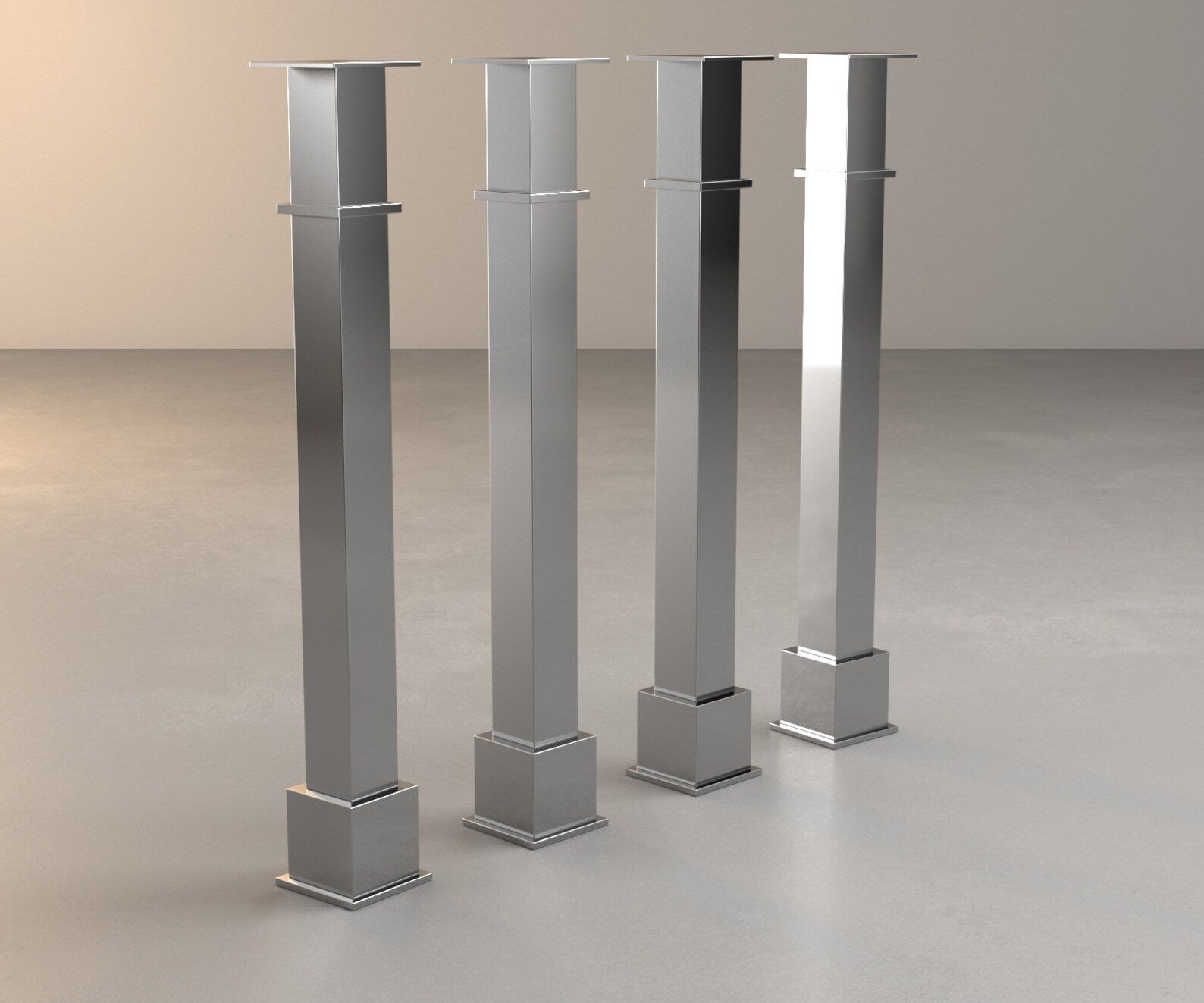Essential Aspects to Think About When Selecting Legs For Kitchen Area Island
Choosing the ideal legs for a kitchen area island involves a careful analysis of multiple aspects that can considerably affect both functionality and visual allure. As we explore these components, it becomes clear that each choice can have far-ranging implications for the total kitchen experience.
Material Options
When picking legs for a kitchen island, comprehending the numerous material choices is crucial for achieving both aesthetic allure and architectural integrity (Legs For Kitchen Island). The option of product significantly influences not just the durability of the island however additionally its total design and performance
Timber is a preferred choice, providing warmth and adaptability. Strong woods, such as oak or maple, offer stamina and can be discolored or repainted to match the cooking area decor. Metal legs, frequently made from stainless-steel or functioned iron, add a industrial and modern feel while guaranteeing sturdiness and security. These products are immune to use and can sustain significant weight, making them excellent for bigger islands.
An additional alternative is crafted materials, like MDF or plywood, which can be much more affordable while still providing a series of finishes. They might not supply the exact same level of security as solid wood or steel. Legs For Kitchen Island. Last but not least, materials such as acrylic or glass can create a modern appearance, though they may require added support to guarantee stability.
Eventually, the selection of product for kitchen area island legs should straighten with the preferred capability and the general theme of the cooking area.
Design And Style

When considering style, the shape and finish of the legs are vital. Tapered legs can supply a feeling of agility and sophistication, while thicker, a lot more durable legs can communicate stamina and security. Furthermore, the surface-- be it painted, stained, or natural-- should complement the cabinetry and countertop products to develop a unified appearance.
Additionally, the style of the legs can likewise show personal taste. Personalized or attractive legs, such as those including intricate makings or one-of-a-kind geometric forms, can serve as focal points, adding personality and character to the kitchen area. Ultimately, the right selection will certainly not only enhance functionality yet likewise elevate the aesthetic allure, making the kitchen area island a standout feature of the home.
Elevation Factors To Consider
Selecting the suitable elevation for kitchen area island legs is important, as it directly influences both performance and comfort. The typical elevation for a kitchen island typically varies from 36 to 42 inches, lining up with common counter top heights. A 36-inch elevation is optimal for food preparation and food preparation, enabling for comfy use of kitchen home appliances and tools. Alternatively, an elevation of 42 inches is typically chosen for islands planned for bar seating, accommodating taller stools and providing an informal dining experience.

It is additionally vital to represent users' preferences and elevations. Personalizing the height can ensure a comfy experience for all relative, making the kitchen area island a more enjoyable and useful room.
Weight Support
Guaranteeing ample weight support for kitchen island legs is crucial for both security and performance. The kitchen island commonly serves numerous functions, consisting of food preparation, eating, and additional storage space, necessitating a durable support structure. When picking legs, it is important to take into consideration the general weight ability needed based upon the island's intended usage and the products that will be positioned on it.
The choice of material for the legs plays a substantial role in their weight-bearing abilities. Strong wood, metal, and sturdy composites typically give exceptional stamina contrasted to lighter materials. Furthermore, the layout of the legs-- whether they are straight, tapered, or have a pedestal type-- can affect their ability to distribute weight successfully throughout the framework.
Constantly consult the manufacturer's specifications regarding load limits to ensure that the legs can maintain the desired weight without endangering safety and security. In recap, choosing kitchen area island legs with sufficient weight support is essential for creating a secure and useful culinary space.
Installment and Upkeep
Appropriate setup and maintenance of cooking area island legs are critical for guaranteeing longevity and security. To start, it is important to follow the manufacturer's standards during installation. This often entails protecting the legs to the space station utilizing appropriate bolts, making sure that the legs are level and straightened. Using a level device can help prevent tottering and enhance the total aesthetic allure of the kitchen area island.
When installed, routine upkeep is required to maintain the integrity and look of the legs - Legs For Kitchen Island. For wooden legs, periodic cleansing with a damp fabric and application of ideal wood gloss can prevent wetness damages and maintain their surface. Steel legs may need a mild cleansing service to remove grease and crud, followed by a dry fabric to protect against rust development
Furthermore, inspect the legs on a regular basis for indications of wear or damage, such as cracks or loose joints. Tightening screws or bolts as needed can likewise prolong the lifespan of the legs. By adhering to these setup and maintenance methods, house owners can make certain that their cooking area island continues to be sturdy and visually appealing for years to come.
Conclusion

Aesthetic comprehensibility is extremely important in selecting the style and style of legs for a cooking area island, as these elements significantly affect the total setting of the space. Tapered legs can offer a feeling of agility and style, while thicker, more robust legs can convey stamina and stability.Selecting the proper elevation for cooking area island legs is crucial, as it directly impacts both performance and convenience. In recap, picking cooking area island legs with adequate weight Read Full Report support is important for producing a practical and risk-free culinary space.
In conclusion, selecting legs for a kitchen island necessitates mindful factor to consider of numerous variables, consisting of material options, design, elevation, weight assistance, and setup.